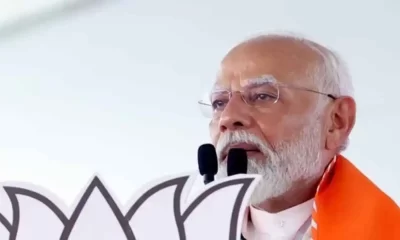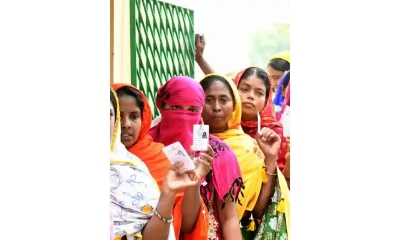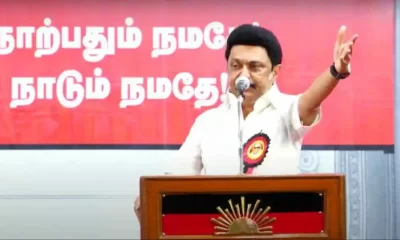Opinion & analysis
Pulwama terror attack: Amid outrage and talk of war, need to face facts, decide policy

[vc_row][vc_column][vc_column_text]
By Rajesh Sinha
A week after an attack should be more than enough time to overcome initial shock and outrage. However, after 40 men of Central Reserve Police Force (CRPF), India’s main paramilitary force for internal security, were killed in Pulwama in Jammu and Kashmir, when an explosive laden vehicle rammed into their bus on Feb 14, there is no sign of the anger dying down.
Jaish-e-Mohammad (JeM) – the terror outfit that claimed responsibility for the attack – being based in Pakistan has further fuelled anger, more so among the radical elements among the Hindus.
Chest thumping and breast-beating has come to be the standard reaction to terror attacks in India, and the Pulwama carnage is no different. What is dissimilar is the level of noise generated by members of the government and their party Bharatiya Janata Party (BJP) along with its sister organisations. Also different is the fact that the Pakistan link has provided their stormtroopers a ‘reason’ to resume targeting fellow Indians – all moderate, liberal voices as well as Kashmiris – in the country.
Government’s ‘response’
So far as the Narendra Modi government is concerned, a look at its response to the attack and the approach it has had towards the problem of insurgency shows that rhetoric does not match action, action does not provide desired outcome and none of these is backed or justified by facts. If the attack should have been a wake-up call, it has gone unheeded. If it should have been a turning point, the government has refused to turn.
The Modi government seems to have become a prisoner of its own propaganda about a strong, 56-inch chest Prime Minister and prefers a simplistic, muscular approach towards complicated problems.
Jaish-e-Mohammed planning more suicide bomber attacks in next 2 days: Intelligence inputs
Treating the problem in Kashmir as mainly a security issue that can be tackled simply by eliminating those who take to the gun, the talk is now about extorting revenge through military means.
Anger and outrage is natural, but it cannot be policy. Prussian general, Carl von Clausewitz called war ‘politics by other means’, that war is an instrument of policy. War, he proposes, should be seen as a means to achieve the political goals which states set themselves. The goal is not victory in war but what victory brings.
Calling for revenge – some even asking for war – teaching Pakistan a lesson may be ok, but where is the policy? Just victory cannot be the objective of going to war. What is it supposed to achieve? Did the much touted ‘surgical strike’ in 2016 ‘teach a lesson’ to Pakistan?
Flying the face of government’s claims of success, the situation in J&K has deteriorated steadily and number of terrorist incidents and overall casualties has been going up.
Boom in terrorist incidents and recruitment under Modi govt
According to government’s own figures, terrorist incidents in J&K increased 177% over four years to 2018, from 222 to 614; 838 terrorists were killed over the last five years, a 134% increase from 110 in 2014 to 257 in 2018.
Gujarat mill creates sarees with images of soldiers to pay tribute to the martyrs of Pulwama attack
The year 2018 witnessed the most terrorist incidents over the last five years, 80% increase over 2017.
As many as 339 security forces died – a 94% increase from 47 in 2014 to 91 in 2018 – in 1,708 terrorist attacks over the five years ending 2018 in J&K, Hansraj GangaramAhir, minister of state in the ministry of home affairs informed the Lok Sabha (lower house of parliament) in his reply on February 5, 2019.
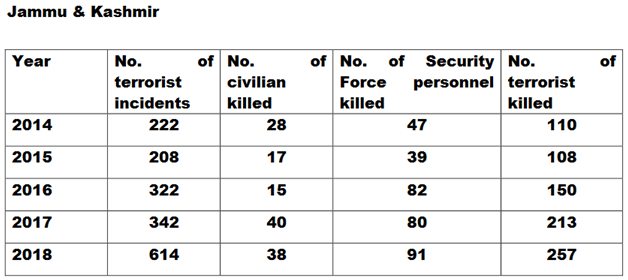
Source: Govt reply in Lok Sabha
Further, news agency PTI reported, the number of youths joining militancy increased from 16 in 2013 to 191 in 2018, an increase of around 12 times under the Modi government.
The number of active militants, both home-grown as well as foreign, is also said to have increased to 300 last year. This is an increase of nearly four times from 78 in 2013, which was the lowest since the armed insurgency broke out in Kashmir.
J&K has also seen a steady increase in IED blasts and other bombing incidents over the last five years, with 2018 witnessing a 57% jump in such incidents, said a report presented by the National Bomb Data Centre (NBDC) of the NSG during a recent two-day international conference in Delhi.
J&K was alone in this: the two other major theatres of violent insurgency in India — Left Wing Extremism (LWE) hit areas and northeast — saw the number of such incidents going down.
SP-BSP announce UP seat sharing without Congress; Mulayam Singh unhappy with tie-up
While J&K saw a total of 37 incidents of bombing (improvised explosive device and explosive ordnance triggered) in 2014, these incidents grew to 46 in 2015, 69 in 2016, 70 in 2017 and as high as 117 during 2018.
“There was considerable decrease in IED blast incidents in all regions of the country except in J&K where terrorists resorted to increased use of IEDs during 2018,” the report accessed by PTI said.
It added that while IED blast incidents reduced to 77 last year from 98 in 2017 in the LWE-hit areas of the country, such incidents in J&K rose by 57% from 21 in 2017 to 33 during 2018.
The killing of 40 jawans of Central Reserve Police Force in a single attack, that too by a suicide bomber, understandably raises concerns. This is the deadliest attack on security forces in J&K and second worst on the CRPF after 75 personnel were killed in Chhattisgarh’s Dantewada in 2010.
Increasing disaffection and govt approach
What is of serious concern to India is that Jaish-e-Mohammad, a ISI-backed terrorist organisation, managed to find enough local support to find a suicide bomber as well as the backing required in the enormous logistics involved in putting together an enormous amount of high explosives – 100 to 300 kg, as per reports – for the vehicle borne explosive device.
This indicates a worrying level of disaffection and disenchantment. A people who feel they have a stake in the system do not let it down. A government has to find ways to bring about that feeling rather than just go around wielding a stick and smiting people.
Two Surya Kiran aircrafts collides in mid-air in Bengaluru, 1 pilot dead
The aggressive Hindutva stance aggravates things further. Periodic proclamations of India being a ‘Hindu Rashtra’, using campaigns in the name of cow protection and beef-ban or cooked up instances of anti-national slogans to specifically target Muslims and Kashmiris, particularly Kashmiri students in various universities across the country – all these intentionally or unintentionally would only increase, if not create, disaffection.
The government has, however, paid scant attention to this. In fact, going by what security and foreign policy experts say, addressing the problem in Jammu and Kashmir does not seem to have been paid much attention by the government and there has been no clear and sustained approach to it.
Former foreign secretary Shyam Saran, wrote in The Indian Express: “What is happening in Kashmir and in other disturbed parts of India is only the more acute manifestation of a national malaise whose symptoms are rising communal, parochial and sectarian confrontations which often erupt into brutal violence.
“While the state has to deal with such violence and restore safety and security, the only sustainable answer is addressing, through constitutionally-mandated political processes, underlying political, economic and social grievances that are drivers of these multiple mutinies.
“To treat each such manifestation as a law and order challenge is to enmesh the state in an action-reaction process where violence born out of disaffection and state suppression follow in mutually escalating and destructive steps.”
From the strictly security angle as well, there are issues of concern. Security expert Ajai Sahni, writing on his portal South Asia Terrorism, dismissed standard reactions to Pulwama attack – ‘act of desperation’, ‘dastardly deed’, ‘cowardly act’ – as “nothing more than flatulent rhetoric”.
He said there are a number of elements in and around the Awantipora attack that suggest a potentially major strategic shift.
Combined with the nature, target and scale of the attack, the fact that the Pakistan-based and state-backed JeM almost immediately claimed the attack indicates that it has received clear directives from its Inter Services Intelligence (ISI) handlers to ramp up its visible activities in J&K.
Far from an ‘act of desperation’, says Sahni, the attack likely reflects growing confidence in the Pakistani military establishment as a result of the anticipated outcome in Afghanistan, where Rawalpindi feels that its proxies are now on the verge of victory, with the imminent withdrawal of American Forces (with other allies likely to quickly follow, if not lead, the flight).
This can free up some of Pakistan’s resources, earlier committed to Afghanistan, for an escalation in J&K, particularly in an environment of growing impunity. Believing that they have already defeated one superpower (the Soviet Union), and are on the cusp of defeating the other (USA), the Pakistan Army is likely to reckon that India will be a relatively soft target.
Sahni does not think much of India’s response: “Indian reactions have also been bursting with belligerent rhetoric, threatening vengeance, with Prime Minister explicitly stating that the security forces will be given a ‘free hand’ to deal with the terrorists (earlier statements would have led us to believe that the Forces had already been given a ‘free hand’ many times over) and that those responsible will pay a “very heavy price”. Much of this is nothing more than face-saving bluster in the wake, not only of the devastating VBIED attack, but of the abysmal and abject failure of the regime’s Kashmir and Pakistan policies (if the mischief and floundering of the past nearly five years could even deserve that appellation).”
Military capability
While the Security Forces and the Army will now be pressured to engineer some theatrical operations to construct the necessary ‘optics’ for the ruling party to approach the looming General Election, it is abundantly clear that little real option exists.
While many pro-BJP, pro-Hindutva social media groups have often proudly shared a post about then General SHFJ Manekshaw bluntly telling then PM Indira Gandhi that the Indian army could not go to war without adequate preparation, this is precisely what is not realised in the present context.
Many reports suggest the present regime has done little or nothing to address cumulative deficits that have accumulated over the decades, and annual budgets in these sectors have, in real terms, shrunk from year to year, particularly in the ‘capital expenditure’ category which funds capacity building.
In March 2018, a report of the Parliamentary Standing Committee on Defence had observed that 68 per cent of all equipment with the Armed Forces was in the ‘vintage category’, and that the Forces did not have the ammunition reserves to sustain a 10 day war with Pakistan. “The only visible response to this report was that the Chairman of the Committee, Bharatiya Janata Party Member of Parliament Major General (Retd.) BC Khanduri, who earlier served as Chief Minister of Uttarakhand, was relieved of his position,” notes Sahni.
A report of the Parliament’s Estimates Committee headed by senior BJP leader Murli Manohar Joshi, and comprising of 16 of the party MPs said in August 2018 that India’s defence preparedness level was “unacceptable” and the situation was “ominous”. The report accused the government of bringing defence preparedness down to the 1962 levels when China virtually steamrolled over India.
The committee said: “…… Today at 1.6% of the GDP, India’s defense budget to GDP ratio has reached the levels we had before 1962. The implications could be ominous.”
The committee notes that capital expenditure percentage has been dropping ever since Modi came to power: “In the years 2012-13 and 2013- 14, the share of capital expenditure was 39% in each year, which in the year 2017- 18 and 2018-19 came down to 33% and 34%, respectively.”
Perhaps there are other things on the mind of Prime Minister Narendra Modi. The day the attack happened, he was reportedly busy with a team shooting a wild life documentary film till 7 pm. The next day, he was addressing a rally in Jhansi, talking about the attack and asking people to vote BJP.
What should have put the government in the dock has become a boon for it. It suits the government to keep the public attention focused on this, rather than face embarrassing questions on its other shortcomings.[/vc_column_text][/vc_column][/vc_row]
Opinion & analysis
Never say never again: Nitish Kumar’s expertise at hoodwinking allies shines through!
Nitish Kumar does it again!
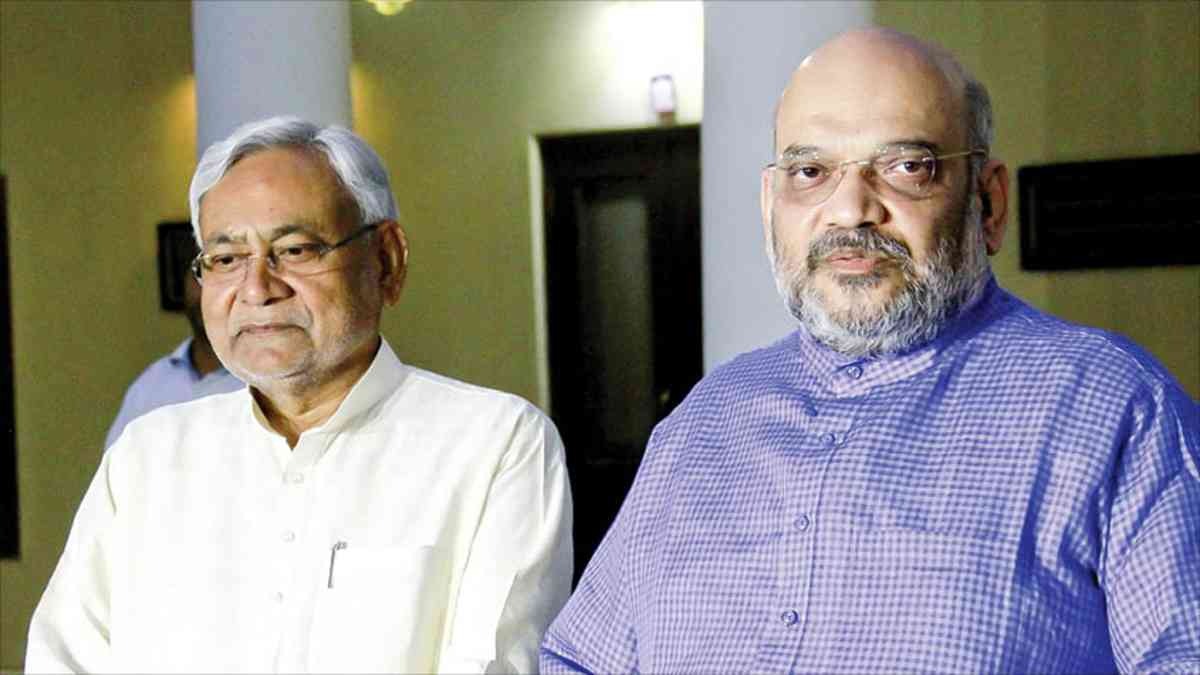
By Vikram Kilpady
Possibly the first state government to fall after the ascendance of the Modi-fied BJP without that party’s hand in the machinations has just shaken up the political landscape in Bihar, and the country. Nitish Kumar has pulled the rug from under the feet of the party. But since history has seen several turns first as a tragedy then as a farce, as noted by Hegel and Marx, Nitish Kumar possibly has the last laugh since he’s done the tragedy-farce duo twice. First, with the Rashtriya Janata Dal and, now, with the BJP, which among its many leaders has one man who gets called Chanakya way too often.
Once the party with a difference, the BJP has mastered the game of overturning elected governments; Madhya Pradesh where a maharajah switched to his aunt’s party, twice in Goa where elected Congress MLAs found faith in a new boss, Maharashtra where the cadre-strong Shiv Sena was ripped apart by a minister’s ambition, Karnataka where Operation Lotus blossomed first and spread its petals across the country.
Soon after the Modi magic of 2014, the dispirited opposition found new hope in the victory of Nitish Kumar and Lalu Yadav in the Bihar elections of 2015. But that was short-lived, Nitish found himself stifled by the ambition of Tejashwi Yadav and changed his mind, walking back to the BJP, which was eager to support him.
The 2020 election had the writing on the wall written in a more legible hand. The BJP won 74 seats, just one short of the party with the most seats, the RJD, which won 75. Nitish Kumar came third with 43 seats. The BJP was gaining at the cost of the Janata Dal United, which beat down Chirag Paswan’s rhetoric but couldn’t manage enough MLAs. The national party cannibalised its partner several times over throughout their association. The symbiosis of the initial years under Vajpayee was becoming a brain and brawn drain for the JDU. The election results were not free from controversy though, with the RJD alleging ballot boxes were changed in the middle of the night. The elections may have been won by the BJP and Nitish Kumar, helped by the image of Prime Minister Narendra Modi, but politics is not just platitudes, it also involves dirty work.
The use of RCP Singh by the BJP pointed at the potential of a Shiv Sena redux in the JDU, prompting the old fox to return to familiar Janata buddies, though once stabbed and all. But what is politics without the choosing of strange bedfellows, even if it borders on promiscuity and worse.
Read Also: Bihar BJP accuses Nitish Kumar of betraying Bihar people
The other angle to see the Bihar turn is from the lens of national politics. The idea of a country rid of the primary opposition party, aka becoming Congressmukt Bharat, has gained popular acceptance among the many for whom democracy is just voting in a new government. The turning of the Congress from its trademark white kurta to black attire was seen as a gimmick by the mainstream media. Far from a gimmick, the party was using what it encountered in Tamil Nadu where it rides on an ally’s stronger connect. The DMK’s parent, the Dravidar Kazhagam and its offshoots, still wears black shirts in protest against the idea of a homogenous India smearing over the vast differences between the country’s many constituents. With Hindutva becoming that all-unifying glue being applied by the BJP across the length and breadth of India, the Congress’s choice of black shows a new savvy.
Covid may have eclipsed the economy but many other slights and the worsening employment situation have India on uneven terrain. The Centre has to hold, but with accountability of successive state governments now enveloped buried in the image of the much-sought-after Strongman, an image that papered over the stark inadequacies of his administration, and won him and his party elections handsomely. The country was wearily dragging its battered economic self for another election some two years away. Nitish Kumar’s somersault has brought realpolitik back into the mix but investing all hope in serial side-switchers can be harmful for one’s emotions and well-being.
To be a rock for the Opposition, Nitish Kumar should not roll. But can old dogs learn new tricks?
Nitish Kumar stakes claim to form new Mahagathbandhan government in Bihar
Bihar Chief Minister Nitish Kumar resigns
India News
Yearender 2021: When hate uncovered its face
Instead of protecting victims of such incidents, the perpetrators not only enjoy immunity from the law, but also the administration in BJP-ruled states punishes victims. The use of false cases and arrests under draconian laws like UAPA are the preferred weapons.
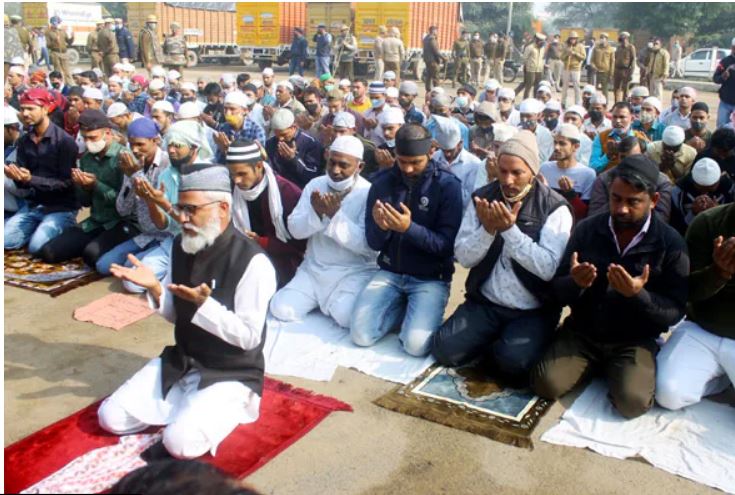
By Mohammad Javed Rasheedi
2021 is about to melt into 2022 in less than 48 hours. Majoritarian politics continued to hold its way over the country this year. But this year, it was not just Muslims but also Christians who felt the heat of Hindutva attacks across India as right-wing Hindu groups waged a culture war against them. Several churches have been attacked and statues of Jesus broken, the latest being in Ambala’s Army Cantonment, the scene of many a Rudyard Kipling work.
December saw targeted hate speeches against minorities. The one at Haridwar saw many participants vow to even take up weapons to redeem their faith by killing non-Hindus. The Hindu right-wing has waged war against Christians accusing them of religious conversion through their missionary work and Muslims for Love Jihad, an Islamophobic trope singling out Muslim men for falling in love with Hindu women and then converting them into Islam. However, such allegations targeting minorities have become a cornerstone of Hindu right-wing nationalism.
The Association for the Protection of Civil Rights, United Against Hate, and United Christian Forum jointly released a fact-finding report highlighting the series of attacks on churches and hate speech against Christians across India. According to the report, India has recorded more than 300 attacks on Christians and worship places within the first nine months of 2021.
Of the 305 incidents, 66 took place in Uttar Pradesh, 47 in Chhattisgarh and at least 32 in Karnataka.
While another report of the United Christian Forum had claimed that India reported more than 400 incidents of violence against Christians across the country. Among those, the incident involved storming churches, burning Christian literature, attacking schools and assaulting worshipers.
However, it is shocking that only 30 FIRs have been registered so far in these cases. On many occasions, restrictions were imposed on people to carry out religious ceremonies.
First on the list of attacks is the one on October 3, where a mob of 250-300 persons barged into a Roorkee church in Uttarakhand and attacked people, destroyed CCTV cameras, and vandalized church premises. Many reports said there were only 12 inside the church for prayers when the attack took place.
Apart from this, the attacks on churches were also reported from BJP-ruled states Haryana, Uttar Pradesh, Madhya Pradesh and Karnataka. And these attacks have taken place over allegations of religious conversion. Christians prayers meetings have also been stopped by the same Hindu mob who had stopped Jumma namaz in the so-called Millennium City, Gurugram. The city also saw an attack on a school’s Christmas celebration.
In the last week of 2021, the bank accounts of Mother Teresa’s Missionaries of Charity were frozen over FCRA claims, West Bengal Chief Minister Mamata Banerjee tweeted about the heartlessness behind the move affecting the charity of the outfit.
Some 22,000 patients and employees have been left without food and medicines, the West Bengal Chief Minister had tweeted.
The Missionaries of Charity was founded in 1950 by the late Mother Teresa, a Catholic nun from Macedonia, who moved to India and took care of the destitute and the poor and won the Nobel Peace Prize in 1979 for her work.
Hate speeches have been curtailed by some norms, keeping them among friends and family. The last week of 2021 saw more public hate speeches in the country. The controversial Dharam Sansad organized in Haridwar, other such events in Delhi and Chattisgarh saw where priests and leaders taking an oath to kill Muslims, and even urged Hindus to arm themselves against the Muslims to make India a Hindu Rashtra.
With next year’s assembly elections in Uttar Pradesh, Uttarakhand, Punjab, Goa and Manipur due shortly, the increase in such hate is an attempt at reviving polarisation.
The violence in Tripura, where VHP hoodlums attacked Muslims and vandalized some of their mosques and Friday prayers disruptions at designated places at Gurugram were also the prime example of rising hate against Muslims.
Anti-Hindu violence in parts of Bangladesh triggered violence in Tripura. The communal riots erupted on October 26 after a rally organized by the Vishwa Hindu Parishad to protest against the attacks on Hindus in Bangladesh turned violent.
The VHP and the Hindu Jagran Manch organized rallies in different parts of the state to protest against the violence in Bangladesh. Later, the VHP and other right-wing groups denied any role in the violence.
The anti-Hindu violence in Bangladesh, which erupted during the Durga Puja festival, was triggered by rumours that the Quran had been insulted in one of the pavilions set up for the celebrations. Seven people were killed, several temples desecrated, and hundreds of houses and business establishments of the Hindu minority were torched.
However, many Muslim groups alleged political conspiracy claiming that the minorities were being targeted in the north eastern state. There were many arrests and some journalists covering the riots in Tripura were also detained. Those who tweeted in favour of Tripura’s Muslims also found themselves being served notices by the state police.
The Uttar Pradesh government had faced severe criticism from the opposition over the killings of Kasganj youth Altaaf in mysterious circumstance. He had been arrested on suspicion of eloping with a Hindu woman. Again, the smoldering love jihad theory. The law and order in Uttar Pradesh, which had earlier won so much praise from PM Modi and other BJP leaders, has been roundly criticized by opposition parties in Uttar Pradesh.
The family of the deceased had alleged that he was tortured by police in the lockup, which led to his death. Police claimed the accused killed himself using the drawstring of his jacket’s hood when he went to the lockup washroom.
Apart from mob lynching, Muslim street vendors in Ahmedabad and some parts of Madhya Pradesh and other parts of the country have been threatened and disallowed from pursuing their livelihood. In Ahmedabad, the Hujarat High Court stepped in to tell off the civic authority to desist from such measures. In Assam, poor peasant families cultivating land for decades were brutally evicted only because they belonged to the Muslim minority. The point-blank shooting of Moinal Haque by police personnel caught on video and the subsequent death dance by a photographer with the remains indeed were a mirror for the crumbling facade of secular India, now overtaken by an aggressive mindless herd mentality spewing hate and violence.
Read Also: Masik Shivratri 2022: Know date, shubh muhurat, puja vidhi, significance
An empty desolate car park outside Sector 37 police station in Gurugram where Muslims had performed Friday prayers for more than a decade turned into a battleground of faith. Hindu right-wing groups staged protests, sloganeered during Friday prayers and held a Govardhan puja at the namaz site just to deny namaz here.
Instead of protecting victims of such incidents, the perpetrators not only enjoy immunity from the law, but also the administration in BJP-ruled states punishes victims. The use of false cases and arrests under draconian laws like UAPA are the preferred weapons.
Haryana news
Dushyant Chautala stood up for farmer’s cause; opposition failed
The Indian farmer constitutes 40 per cent of the country and an even higher percentage of its poor and as the available data points out, is under immense stress.
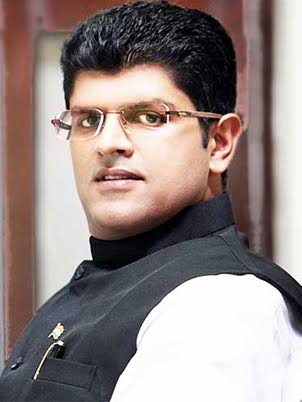
By Prateek Som
The Indian farmer constitutes 40 per cent of the country and an even higher percentage of its poor and as the available data points out, is under immense stress. The modernization of the central farm laws is nothing but an adaptation of provisions which already exist in many states, including Punjab and Haryana. How come the three acts become anti-farmer in some states and why not in many others is something the activists themselves cannot explain.
Big states like Uttar Pradesh, Bihar, Maharashtra, West Bengal, Rajasthan are not even a part of the farmers’ agitation and there is no protest against the central or state government in these states, despite the fact that BJP is not in power in some of these states. More importantly, some agriculturists and several economists have been campaigning for abolishing MSP based procurement as it is unfairly tilted towards a few states like Punjab.
The Central government has neither abolished the MSP nor does it say anything against it in the laws. If, despite this, the impression is being spread that MSP is to be abolished, this is clearly mischievous. The activists are not only spreading the misinformation about the MSP abolition but they are asking for an unreasonable clause in the law for unlimited MSP based procurement which was never a part of the previous laws related to agriculture and APMC acts.
The Indian farm bills are in line with international precedence wherein a number of developing economies have been making changes to their agriculture policies since the 1990s to encourage private sector involvement which would provide a major fillip to the sector. The International Monetary Fund has also backed the recent farm acts as being an important step in the right direction. Despite all the supportive arguments in the favour of the laws, India has seen unprecedented protest in and around the capital as a result of political vendetta.
Politics of Yogendra Yadav and Gurnam Chaduni and its irrelevance to the farmer’s cause
Raising the farmer’s issues should be an act done collectively but the state farmer activists are trying to establish a monopoly in the leadership. They are not even active in all the parts of the state, but targeting only those districts with paddy belt of cropping pattern. Most of them are politically motivated.
In an interview given to NDTV, Yogendra Yadav came out as an aspiring candidate for Haryana CM post and he was advertised as the most fit politician for the position. He formulated his own party, ‘Swaraj’, after being expelled from AAP and lost badly in polls. It is a proof that he lacks mass support. A report by Divya Bhaskar states that farmer leader Gurnam Chaduni was accused of teaming up with political parties like Congress, AAP, SAD and some independent leaders and getting into a deal worth Rs 10 crore to topple the Khattar government in Haryana in return of Congress ticket for elections. There are allegations that Chaduni is collecting funds out of the collection drive for protests and hiding the funds from other leaders. He was also blamed for instigating farmers to disrupt the January 26 celebrations at the Red Fort. Haryana CM Khattar held Chaduni responsible for instigating the farmers that led to clashes between farmers and police at Karnal just before the Kisan Mahapanchayat programme. As a result of his politically motivated efforts, Chaduni was suspended by Samyukt Kisan Morcha from meeting politicians across country. In the 2019 assembly elections, Chaduni contested from Ladwa as an Independent candidate, but suffered a heavy defeat, garnering only 1,307 votes and losing his deposit.
Yogendra Yadav and Gurnam Chaduni are mere examples of how election failures like themselves are trying to garner the support of the commoners for their own political resurrection. The claim of being a leader of the farmers is in contravention with the inconsiderable support both Yadav and Chaduni got in the polls. The Shiromani Akali Dal that left the NDA government in the pursuance of state elections and under the disguise of farmer’s demands has made zero impact on the political ground of Punjab. Their biases can not only be seen from their actions but their cause and concern for two states out of 28. The threat posed by leaders like these to the democratic process of passing of a bill can be seen through the factual analysis of what the laws actually say versus the intentional misconceptions spread by such leaders.
Since an unlimited MSP based procurement is not in the law even today, it is not clear how this is even an issue. More importantly, putting this in the law means India will get tied to distortions that MSP based prices cause in perpetuity. The government has made it clear that procurement at MSP will continue and also that the mandis will not stop functioning. Farmers will have the option to sell their produce at other places in addition to the mandis. It is worth noting that only 6% of farmers actually sell their crops at MSP rates, according to the 2015 Shanta Kumar Committee’s report using National Sample Survey data. There are fears that contract farming will lead to land loss of the small and marginal farmers to big corporates. However, adequate protection of land ownership is in place to protect farmer interests. The act explicitly prohibits any sponsor firm from acquiring the land of farmers – whether through purchase, lease or mortgage. The point to note is that contract cultivation is voluntary in nature and farmers cannot be forced into an agreement.
How Dushyant Chautala is taking initiatives for farmers
Dushyant Chautala is the only state leader who has met Central leaders regarding the farmer demands – Prime Minister, Home Minister, Agriculture Minister along with other cabinet ministers Nitin Gadkari and Piyush Goyal. No other leader in India has met them specifically for farmers’ demands. That shows the concern and responsibility on the part of the JJP leader who is a leader of the masses.
In April 2020, Deputy CM Chautala addressed that the state government will procure the crops of the farmers in a better way while saving the state from the corona epidemic. As a result of this, even in the pandemic situation, mandis have been increased to 162 from 67 for the purchase of mustard at MSP. Haryana is the only state across the country which has started procurement of mustard crop in this pandemic. In November 2020, Dushyant assured the farmers that government will buy every grain of the crop. He made procurements for non-MSP crops to get the rate of MSP crops. He also announced formation of women Self-Help Groups in all villages on the lines of successful initiative in Hisar, to increase employment opportunities for women and showcase their talent at international level.
In February 2021, Dushyant made the announcement to buy 6 crops including wheat, mustard, pulses, sunflower, gram at MSP, barley is included for the first time. Haryana is the first state to offer MSP for barley. Every farmer is to be registered on the ‘Meri Fasal Mera Byora’ portal at MSP and payment amount will arrive in the farmer’s account within 48 hours. Along with recent announcements, the schemes like Mukhyamantri Parivar Samman Nidhi Scheme, Haryana Agricultural Machinary Grant Scheme, Pragatishil Kisan Samman Yojana, Pragatishil Kisan Trainer and Kisan Mitra Scheme to promote the inclusive growth of farmers in Haryana.
The main agenda of ongoing agitations
Amidst all the chaos, the agitations by activists like Yogendra Yadav and Gurnam Chaduni are for targeting Deputy CM Dushyant Chautala. It is a matter of record that many times they carried protests outside his residence and their intention and cause are suspicious to the core as they did not target any other leader in power like this.
The agitations in Haryana are mainly against the JJP and specifically targeted towards the leadership of Deputy CM Dushyant Chautala. The attempts of the farmer leaders to make Dushyant Chautala resign from the government are nothing but petty politics to destabilize the state government. If the threat to farmers is real, why the cause of the farmers is not taken up by the farmers from masses than some farmers from selected areas and that too under the leadership of politically motivated specific leaders only who have ties with the parties who are eyeing the upcoming elections?
The high-pitched farmer agitation is not just based on incorrect perceptions of what the new farm laws will result in – the abolition of APMC mandis and MSP-based procurement – they are also not about protecting the farmer in the long run. The agitation is purely an attempt to corner the stable functioning state government, to boost the sagging political fortunes of the activist leaders by deliberately misleading farmers, to run a personal vendetta against a young and dynamic leadership of Dushyant Chautala who is making efforts for the farmers and to give chance to Congress to come in power. That is why, before the activists decided to fuel the agitation, they focused on batting for spreading misinformation, have nothing to say about non-MSP crops/livestock in the state and have no future agenda for the inclusive growth and development of farmers. And to make the matters worse, they are trying to provoke the masses against the people in power for their vested political interests.
The author is an Advocate in Supreme Court of India and National Spokesperson of Jannayak Janta Party
-

 Entertainment22 hours ago
Entertainment22 hours agoManisha Koirala reveals reason for rejecting Dil To Pagal Hai, says regrets that decision
-
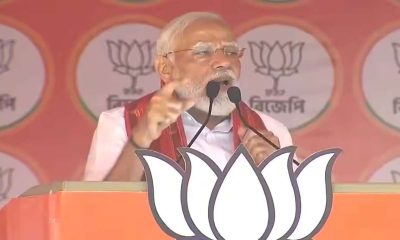
 2024 Lok Sabha Elections21 hours ago
2024 Lok Sabha Elections21 hours agoPM Modi says Congress leaders consider themselves above Lord Ram
-

 2024 Lok Sabha Elections23 hours ago
2024 Lok Sabha Elections23 hours agoAmit Shah says neither Congress nor Trinamool chief Mamata Banerjee can interfere with CAA
-

 Trending22 hours ago
Trending22 hours agoDolly Chaiwala sips coffee atop Burj Khalifa, video goes viral
-

 Trending21 hours ago
Trending21 hours agoNexon owner replaces broken side mirror with a plastic mirror, social media users say epic moment
-
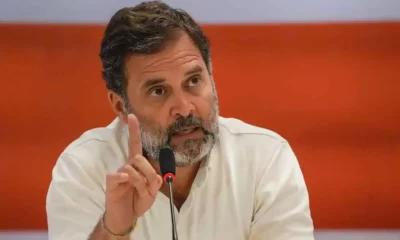
 2024 Lok Sabha Elections3 hours ago
2024 Lok Sabha Elections3 hours agoRahul Gandhi clarifies on wealth survey remark, says aim is to identify injustice
-

 Cricket news4 hours ago
Cricket news4 hours agoIPL 2024: Marcus Stoinis hits first IPL century as Lucknow Super Giants beat Chennai Super Kings by 6 wickets
-
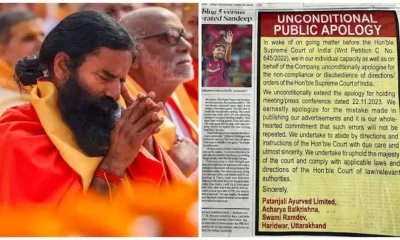
 India News2 hours ago
India News2 hours agoRamdev, Balkrishna publish bigger apology in newspapers after Supreme Court’s rap





